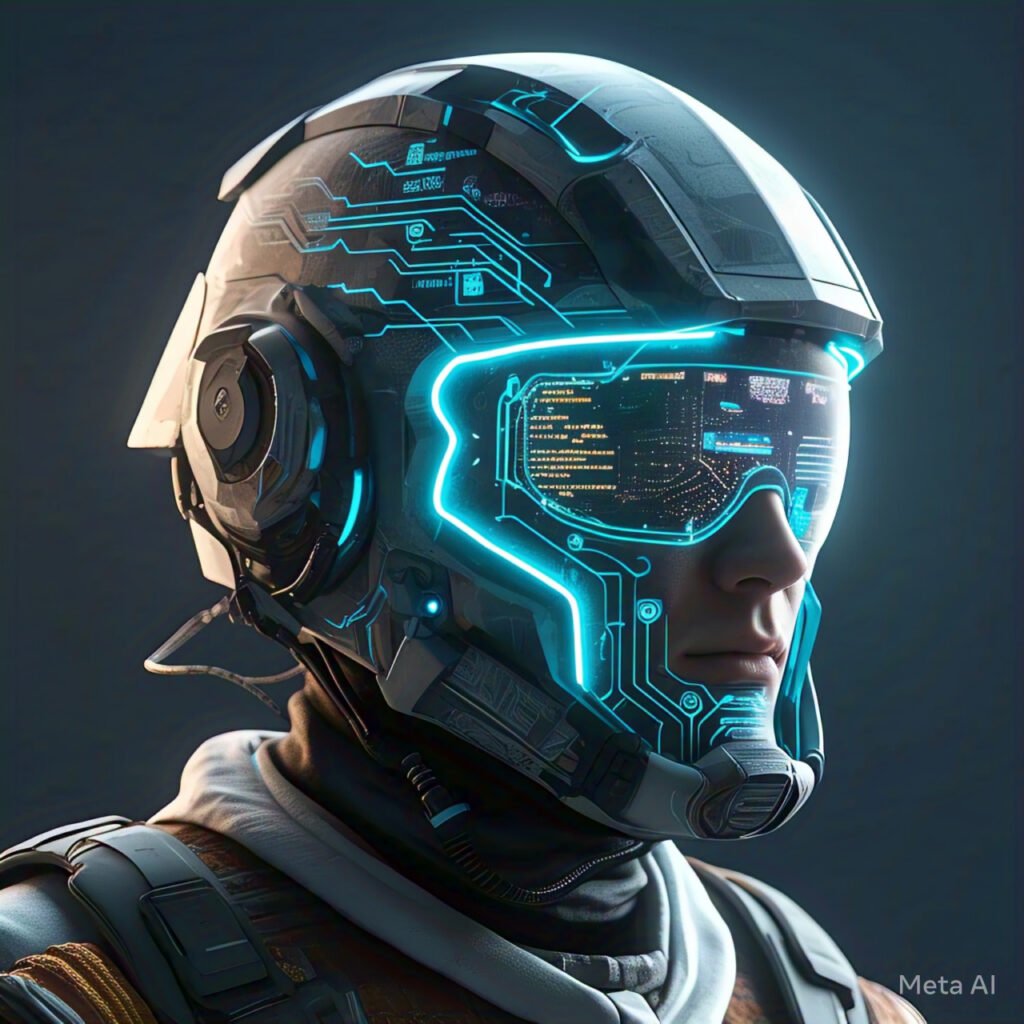Al in Motorcycle Helmets: The Smart Biker’s Future
Technology is changing all aspects of our lives at a very fast pace, and the motorcycle world is no different. One of the most thrilling developments in recent years is certainly the incorporation of Artificial Intelligence (AI) into motorcycle helmets. These smart helmets with AI are meant to make riders safer, navigate more easily, and enjoy motorcycling more, making it not just easier but much safer.
With AR screens, in-real-time danger detection, voice control, and biometric sensors, AI helmets are transforming the future of cycling. Here is a glimpse into how technology is transforming motorcycle helmets.
How AI is Transforming Motorcycle Helmets
1. Augmented Reality (AR) and Heads-Up Displays (HUDs)
Old motorbike helmets cause the rider to glance off at dashboards or phones to find navigation. Artificial intelligence-driven heads-up displays (HUDs) eliminate this issue by flashing critical information onto the visor. This allows riders to enjoy real-time navigation, speed, and traffic without ever needing to glance off the road.
Next-generation HUDs are also equipped with voice and gesture control, and the bikers can answer a call or make adjustments by gesture or voice command only. The hands-free experience reduces distraction and improves the safety of the rider.
2. AI-Powered Hazard Detection & Collision Avoidance
Smart helmets now have cameras, radar, and LiDAR sensors that identify cars, pedestrians, and road obstacles around them. AI analyzes this information in real-time and warns the rider through audio alerts or visual signals on the HUD.
Machine learning algorithms also study traffic flows and road conditions to enable riders to make better decisions. Rear-view camera images are even provided by some helmets, which eliminate blind spots and enhance situational awareness.
3. Voice-Controlled Assistants & Smart Connectivity
AI helmets integrate voice assistants such as Google Assistant, Siri, or AI bots based on a user’s preference for hands-free use.
Riders can:
Make and receive calls
Control music play
Get directions
Send texts
Seamless connectivity with smartphones is provided via Bluetooth and Wi-Fi connectivity so that riders remain connected without sacrificing safety.
4. AI-Driven Crash Detection & Emergency Response
One of the most life-saving uses of AI in motorcycle helmets is crash detection and emergency response. The helmets have impact sensors that:
Detect an instantaneous crash
Measure the intensity using AI algorithms
Send SOS message and GPS location to emergency contacts or first responders automatically
This functionality guarantees that in case of an accident, assistance reaches the rider in the least amount of time possible even when the rider is unconscious.
5. Adaptive Noise Cancellation & Sound Enhancement
AI-based noise management technology eliminates background sounds such as wind and engine noise, improving communication and audio clarity. The sound also automatically adjusts according to speed, surroundings, and rider preferences, offering a more hassle-free and distraction-free experience.
6. Biometric Monitoring & Health Tracking
There are some future-proof smart helmets with integrated biometric sensors that monitor:
Heart rate and body temperature
Fatigue levels and drowsiness
If the system senses fatigue or stress, it informs the rider to rest. This can avoid accidents due to fatigue, allowing longer rides to be safer.
The Future of AI in Motorcycle Helmets
As technology advances, intelligent helmets will become even more intelligent. Some of the thrilling future prospects include:
5G Integration: Quicker real-time updates for navigation, hazard detection, and communications.
Vehicle-to-Everything (V2X) Communication: The AI helmets will be communicating with vehicles, traffic lights, and other infrastructures, making the accidents even lower.
Eye-Tracking & Gesture Controls: Soon, riders will be controlling the helmet operations by eye movement or hand gestures.
Conclusion
Motorcycle helmets that are fitted with artificial intelligence (AI) represent the future of riding convenience and protection. Fusing real-time data, threat detection, voice commands, and emergency calling, smart helmets decrease risk and optimize overall riding experience.
For technologically savvy and safety-aware riders, it is well worth the investment to opt for an AI-based smart helmet. As the technology continues to advance from here, motorcycle clothing will also be in the upgrade process, contributing even more to motorcyclist road safety everywhere in the world
https://buzgadgets.org/2025/03/05/engine-and-powertrain/




